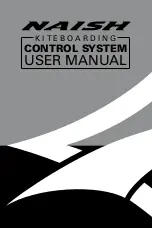
_____________________________________________________________________
30
Full stall
Wilfully induced full stalls remain the realm
of the true experts of our sport.
The full stall is when there is no more
laminar airflow along the surface of the
canopy, and the wing has gone from being
a wing to being just a bunch of material at
the end of some lines.
Once the airspeed has been reduced to
below the minimum speed for the canopy,
the wing will stall. To the pilot it feels like
dropping backwards, not unlike the
sensation felt when a jester removes your
chair from under you when you sit down.
In this phase it is important to avoid
releasing the brakes again, as this may
lead to uncontrollable shooting forward of
the canopy. In extreme cases pilots have
fallen into the canopy through poorly timed
full stall releases.
In the next phase the canopy stabilises
somewhat above the pilot again. The wing
tips will often try to re-inflate quite
violently, and it requires considerable
force to maintain the wing in the stalled
configuration.
It is important to stabilise the wing above
the pilots' head before releasing the brake
lines. The pilot accomplishes this by
slowly releasing the brakes until the wing
is all but re-inflated across the entire span.
In this phase the wing will be moving
somewhat along the cross axis. The pilot
attempts to release the last bit of brake
input during a forward surge of the wing –
this will cause it to resume flight with the
least possible diving tendency. Pilots
should note that timing the release
wrongly may cause the wing to dive quite
aggressively and be prepared to catch the
dive.
Test pilots have also tested the
asymmetric release of full stalls on the
Trango X-light². This manoeuvre is ONLY
for reference and should not be
emulated by owners.
CAREFUL! The
approach of the
minimum speed is
recognised through
the notable lack of
forward speed and
thereby wind noise, and the extreme
increase in brake line tension. Up until
the wing starts to fall back the pilot
may resume normal flight by simply
releasing the brakes.
Spin
The negative spin occurs when one
side of the wing is stalled whilst the
other is still flying. This can happen
when, if flying very slowly, one brake is
pulled quickly to below the seat. When
the glider starts to spin, it will turn
quickly around the vertical axis, with
the stalled side flying backwards. To
recover from a spin, simply release the
brake on the stalled side. The glider
will immediately speed up and, most
likely, suffer an asymmetric collapse.
Recover as described above.
If you suspect that a spin is imminent
then immediately release the inside
brake. The glider will accelerate
smoothly and resume normal flight
with little altitude loss.
Careful! A poorly timed
release of the
overbraked side in a
spin may lead to
complicated
asymmetrical collapses
with high risk of cravattes!















































